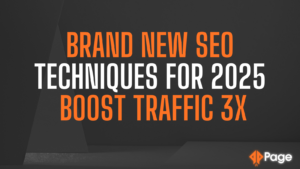Achieving a prominent position on Google’s SERPs is akin to finding the Holy Grail in the digital marketing world. This quest for visibility is not just about bragging rights; it’s about connecting with your audience at the moment they are seeking information or solutions you provide. The journey to the top of Google’s search results is complex, governed by algorithms that might seem like moving targets. Yet, with a strategic approach rooted in a deep understanding of SEO principles and a dedication to excellence, businesses can navigate this landscape successfully.
Google’s algorithms are designed to surface the most relevant, authoritative, and user-friendly content for any given query. This means that to rank higher, your website must be seen as a credible source of information, offering clear, comprehensive answers to the questions your audience is asking. The path to achieving this involves a multifaceted strategy encompassing everything from keyword optimization to technical SEO, all aimed at enhancing the user experience and aligning with Google’s goal of delivering the best possible search results.
The Foundation of SEO Success
The bedrock of any effective SEO strategy is meticulous keyword research. This critical first step is about understanding the language your potential customers use when they turn to Google with their queries. It’s a process of empathy, putting yourself in the shoes of your audience to grasp their needs, questions, and pain points. Tools like Google’s Keyword Planner and SEMrush are not just utilities in this process; they are windows into the minds of your target audience, offering a glimpse into the terms they search for, the frequency of those searches, and how competitive those keywords are.
Selecting the right keywords is an art form, balancing relevance, search volume, and competitiveness. It’s about finding those sweet spots—terms closely aligned with your content and offerings, yet not so saturated with competition that ranking becomes an insurmountable challenge. These keywords should be the pillars upon which your content strategy is built, guiding the creation of blog posts, articles, product pages, and more. Each piece of content should serve a dual purpose: to provide value to your audience and to signal to Google the relevance and authority of your site in relation to those key terms.
But keyword research is more than just a technical task; it’s a strategic endeavor that lays the groundwork for all your SEO efforts. The goal is to identify opportunities where your website can genuinely meet the needs of searchers, thereby driving targeted traffic to your site. This traffic is not just numbers in an analytics report; it represents real people actively seeking solutions that your business can provide. By focusing on keywords that are not only relevant but also attainable and capable of attracting the right kind of visitors, you set the stage for increased visibility, engagement, and ultimately, conversion.
On-Page Optimization – A Closer Look
Delving deeper into on-page SEO, it’s clear that this facet of optimization is a linchpin in the quest for higher Google rankings. Beyond the mere placement of keywords, on-page SEO is an art that balances the technical aspects of web development with the nuanced understanding of human search behavior. It’s about creating a symbiotic relationship between content and user experience, where every element on the page serves a purpose, either to inform, engage, or guide the reader.
Enhancing User Experience Through Strategic Keyword Use
The strategic placement of keywords goes beyond ticking boxes for SEO; it’s about weaving these terms into the fabric of your content in a way that feels both organic and intentional. Title tags, often the first point of interaction in the SERPs, should not only incorporate the primary keyword but also capture the essence of the page’s content in a compelling manner. Meta descriptions, while not a direct ranking factor, play a crucial role in influencing click-through rates, acting as a window into the page’s value proposition. Header tags (H1, H2, H3, etc.) structure your content, making it digestible and easy to navigate, while also signaling to Google the hierarchy of information on the page.
The Power of Internal Linking and Image Optimization
Internal linking does more than just aid Google’s crawlers; it weaves a web of content that enriches the user’s journey on your site. By linking to related articles or sections, you’re not only boosting SEO but also keeping visitors engaged, reducing bounce rates, and encouraging them to explore deeper into your site. Image optimization, on the other hand, marries the visual with the technical. Compressing images to reduce file size without sacrificing quality ensures faster loading times, while descriptive alt text serves the dual purpose of enhancing accessibility for visually impaired users and providing Google with context about the image’s content.
Navigating the Technical Terrain
Technical SEO is akin to the foundation of a house; without a solid base, even the most beautiful structure won’t stand the test of time. Ensuring your site is mobile-friendly is no longer optional, given Google’s mobile-first indexing. A site that seamlessly adapts to various screen sizes not only provides a better user experience but also ranks higher in search results. Page load speed is another critical factor; a delay of even a few seconds can lead to increased bounce rates and lost opportunities for engagement.
Securing Your Site and Enhancing Understanding with Structured Data
Securing your site with HTTPS is not just about protecting user data; it’s a signal to visitors and search engines alike that your site is trustworthy. In an era where data breaches are all too common, HTTPS has become a baseline expectation for users and a ranking factor for Google. Structured data markup, or schema markup, is another tool in the technical SEO arsenal. By providing search engines with explicit clues about the meaning of a page’s content, structured data can enable rich snippets, which enhance visibility in the SERPs and can lead to higher click-through rates.
The Importance of Regular Audits
Conducting regular audits of your website is akin to a health check-up for your online presence. Just as one would not ignore the warning signs of a potential health issue, similarly, identifying and addressing technical issues on your website can prevent minor problems from escalating into major obstacles that impede your SEO success. Google Search Console emerges as a pivotal tool in this process, offering a comprehensive overview of your site’s performance from Google’s perspective. It meticulously points out areas of concern, such as broken links that lead visitors to non-existent pages, duplicate content that dilutes your site’s uniqueness, and crawl errors that prevent search engines from effectively indexing your site. By proactively addressing these issues, you not only enhance the user experience but also solidify your website’s standing in the eyes of search engines, paving the way for improved search rankings.
Building Authority Through Backlinks
In SEO, backlinks are the currency of credibility. Each link from a reputable external site to yours is a vote of confidence in the quality and relevance of your content. Google’s algorithms interpret these backlinks as endorsements, elevating your site’s authority and, consequently, its rankings in search results. However, not all backlinks are created equal. The focus should be on acquiring high-quality backlinks from authoritative sources within your industry. This can be achieved through various strategies, such as guest blogging on respected platforms, creating compelling infographics that others want to share, and actively participating in online communities related to your field. These efforts not only enhance your site’s backlink profile but also increase its visibility and reputation, contributing to a virtuous cycle of SEO success.
Continuous Monitoring and Adaptation
The digital marketing landscape is perpetually in flux, with Google’s algorithms undergoing frequent updates and refinements. This dynamic environment demands vigilance and flexibility from SEO practitioners. Adopting a set-it-and-forget-it attitude towards SEO is a recipe for stagnation. Instead, a commitment to continuous monitoring and adaptation is essential. Leveraging tools like Google Analytics allows you to track your site’s performance in real-time, providing actionable insights into user behavior, traffic patterns, and conversion rates. Armed with this data, you can fine-tune your SEO strategies, making informed adjustments to respond to evolving trends and algorithmic changes. This iterative process ensures that your SEO efforts remain effective and aligned with the latest best practices, helping you to sustain and enhance your search rankings over time.
Wrapping It Up
Ranking higher on Google is a multifaceted challenge that requires a strategic, informed approach. By focusing on comprehensive keyword research, creating high-quality, relevant content, optimizing on-page elements, addressing technical SEO issues, and building a robust backlink profile, you can improve your site’s visibility and position yourself for online success. Remember, SEO is a marathon, not a sprint; patience, persistence, and continuous learning are key to achieving and sustaining high rankings on Google.





